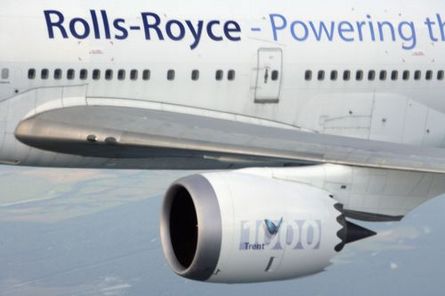Boeing may still face challenges getting the 787 into the air, but the engine manufacturers are ready. The launch powerplant, Rolls-Royce's Trent 1000, was certificated in August and the first engines have been delivered. General Electric has begun the final 150h block test on its GEnx, with certification expected at the beginning of the year.
The companies also have growing orderbooks. GE says it has firm orders for engines on more than 360 787s, plus just over 100 Boeing 747-8s, on which the GEnx is the exclusive powerplant, for a total of more than 1,130 engines. R-R says it has orders for more than 600 engines on the 787.
In addition, R-R's Trent XWB is currently the only engine available on the Airbus's rival to the 787, the A350 XWB, for which announced orders now exceed 300 aircraft. Whether GE will reach agreement with Airbus to offer an engine on the A350 XWB remains the subject of much speculation.
R-R says a single version of the Trent 1000, with a thrust range from 53,000-75,000lb (236-334kN), will power all current versions of the 787 - the baseline -8, short-range -3 and stretched -9. But the Trent XWB, with a thrust range of 75,000-95,000lb on the A350-800/900/1000, will be more than a simple scale-up of the 1000.
While taking advantage of the commonality in the overall three-shaft architecture, R-R says the five-year window between Trent 1000 and Trent XWB entry into service will allow it to evaluate and incorporate additional technologies. The engine is currently in the design phase, with the final engine configuration and selection of technogies scheduled to be completed by mid-2008. Risk- and revenue-sharing partners will be selected during 2008, says R-R.

Trent 1000 fles on 747 testbed © Rolls-Royce
The Trent 1000 first ran in February 2006, and flight testing on R-R's Boeing 747 testbed began in June this year. The 787 is scheduled to fly by the end of March, leading to service entry in late 2008. The first run of the Trent XWB is set for 2010, followed in 2011 by flights on the 747 testbed. Engine certification is scheduled for the end of 2011, leading to a first flight on the A350 XWB in 2012 and entry into service on the A350-900 in 2013.
GE, meanwhile, is developing two versions of the GEnx, the "bleedless" -1B powering the 787 and the conventional -2B for the 747-8. The 54,000-74,000lb thrust GEnx-1B will be certificated in the first quarter on 2008. Engines will be shipped to Boeing at the beginning of the year, but are not expected to fly on the 787 until mid-2008.

GEnx on test © GE Aviation
GE is assembling the first 70,000lb-thrust GEnx-2B, ready for testing at the beginning of 2008. Engine certification is scheduled for the fourth quarter of 2008, leading to entry into service in late 2009 on the 747-8F freighter. The -2B has the same high-pressure core as the -1B, but a different low-pressure spool. Where the -1B has a 111in-diameter fan and seven LP turbine stages, the -2B has a 105in fan and six stages.
Boeing is studying a further stretch of the 787 to produce a -10 variant to compete with the larger A350-1000, but the seating capacity and thrust requirements have yet to be defined. What happens with the -10, as well as an improved 777X also being studied by Boeing could strongly influence whether GE reaches an agreement with Airbus on powering the A350 XWB family.
Currently GE has proposed a 75,000-84,000lb-thrust powerplant for the A350-800/900, but is not offering an engine for the -1000 because it competes with the exclusively GE90-powered 777-300ER. The engine offered to Airbus is similar to the GEnx for the 787, but with a 118in fan, scaled-up core and low-pressure system and additional materials technology that would be available for a 2013-14 entry into service.
Airbus wants GE to develop a new mid-80,000lb thrust-class engine family to compete head-on with R-R's Trent XWB to power all three of the A350 variants. But GE's position remains that one engine, called on to cover a 75,000-95,000lb thrust range, cannot power the entire A350 family efficiently and make it an attractive aircraft.
Flight's commercial aircraft directory
Source: Flight International























